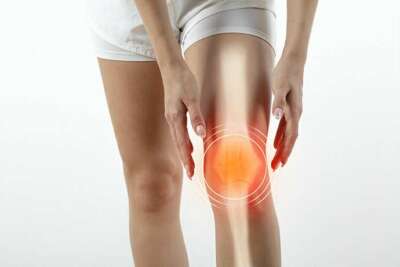
Knee pain is not an uncommon phenomenon and it’s a safe bet that almost everyone over the age of 5 has experienced knee pain to some degree. But transient knee pain is much different from chronic knee pain. And the most common form of chronic knee pain is osteoarthritis. In fact, nearly 14 million Americans deal with osteoarthritis every single day. So what is it, what causes it and what can be done to help with this condition? Let’s dive in.
Osteoarthritis is a chronic disease characterized by the deterioration of cartilage in joints that results in bones rubbing together, creating stiffness, pain and impaired movement. Although osteoarthritis may affect any joint, the knees, hips and hands are most commonly affected. Knee osteoarthritis accounts for more than 80% of the disease’s total burden. Osteoarthritis is a major contributor to functional and social impairment, physical disability and a poor quality of life in older adults. While osteoarthritis is related to aging, it is also associated with a variety of risk factors, including obesity, lack of exercise, poor bone density, occupational injury, trauma and gender. Osteoarthritis is much more common in women and the prevalence of this ailment is increasing, due to a rise in contributing factors such as obesity and the aging population.
While the exact cause of osteoarthritis is not known, it is known what occurs. Initially, the cartilage becomes thinner and softer, then the bones start to rub against each other. As a result, the bone itself grows thicker to repair the damage, which leads to the formation of pointy spurs known as osteophytes at the edge of the joint. This process of wear, tear and deformation creates pain and stiffness, then leading to restricted knee movement.
The signs and symptoms of osteoarthritis are often gradual and get worse day by day, resulting in chronic pain. It can get severe and intense, making many daily tasks difficult. The affected joints may hurt due to the damage done to the bones. The pain may get worse during and after many types of movement or even following periods of rest. When you are inactive, the joints can stiffen. This is why many people feel sore and tight in the morning. This can make it hard to move or enjoy many activities. The synovial fluid within the affected joint might increase due to the inflammation of the soft tissues. Usually, the fluid overcomes the joint friction, but it can also cause swelling. Frequently the muscles around the knee become weakened and the joint gets less stable. Severe cases of osteoarthritis can lead to locking of the joints, making it very difficult to move, which sets someone up for falls and further injuries.
Typical options in the treatment of osteoarthritis include pain medications, hyaluronate injections to lubricate the joint, corticosteroid injections and joint replacement surgery. Protective measures also include exercise, dietary adjustments and massage. Some of these interventions are risky with a poor benefit to harm profile, especially for the elderly, and many people are reluctant to accept them.
However, East Asian Medicine has been shown to provide relief for many suffering from osteoarthritis. Acupuncture works by stimulating the body to release endorphins, the body’s natural painkillers. This can help reduce the pain associated with osteoarthritis, allowing patients to move more freely and engage in daily activities. Acupuncture has also been shown to help reduce inflammatory markers, leading to less swelling and stiffness in the affected joints. By enhancing circulation and relaxing tight muscles around the joints, acupuncture, electroacupuncture and cupping can improve range of motion and function. Lastly, acupuncture can help alleviate the emotional burden of chronic pain. Many patients report feeling more relaxed, less anxious and better able to manage their pain after acupuncture treatments.
The mechanisms underlying how acupuncture works in treating pain have been researched extensively and the neural pathways from acupuncture point stimulation, to the spinal cord, to the deactivation of the pain centers in the brain have been mapped out. Acupuncture has been demonstrated to activate a number of the body’s own opioids, as well as improving the brain’s sensitivity to prescription opioids. A number of other biochemicals involved in pain reduction have been found to be released or regulated by acupuncture stimulation as well, including adenosine and adenosine triphosphate (ATP), gamma-amino-butyric-acid (GABA) and substance P. And when electricity is added, the effects can be even more profound. Electroacupuncture triggers the release of stem cells that can help promote tissue repair and relieve injury induced pain. This may further explain its beneficial effects in reversing osteoarthritis, in addition to improving symptoms.
The American College of Rheumatology and National Institute of Arthritis and Musculoskeletal and Skin Diseases all recognize East Asian Medicine as a clinically safe and effective treatment option for those suffering from knee osteoarthritis. If you or someone you love is suffering from osteoarthritis in the knees or anywhere else, why not consider an alternative to side-effect laden pills? To find out more, please give us a call.

